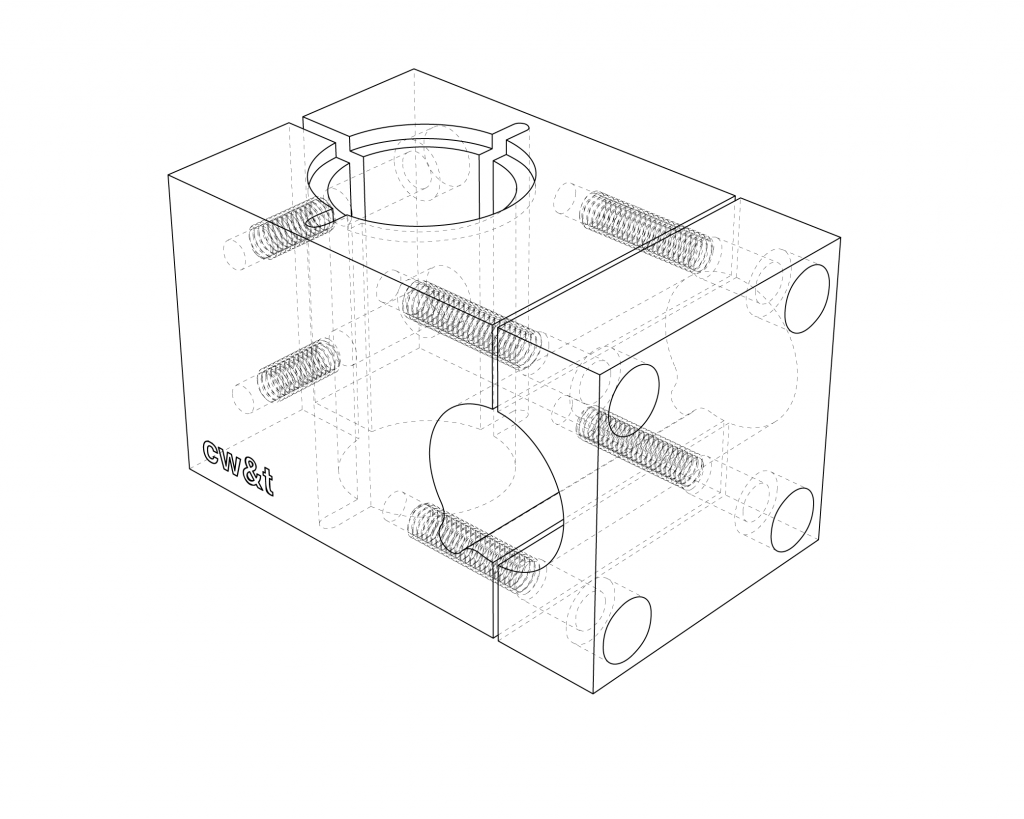
Blockhead Stem, designed by cw&t. Now on sale at cwandt.com/blockhead-stem
Che-Wei Wang (last update 2013) Visit cwandt.com for the latest.

Blockhead Stem, designed by cw&t. Now on sale at cwandt.com/blockhead-stem
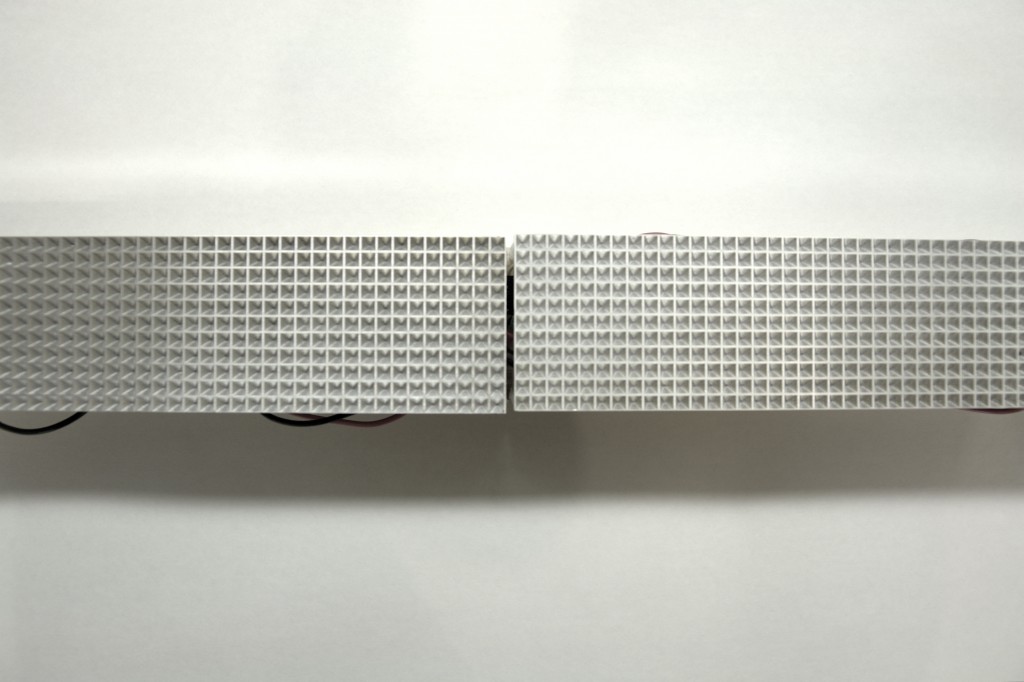
We rely heavily on our vision to identify change. We see sand accumulating at the bottom of the hourglass. We see the minute hand rotate clockwise. How would our sense of time change if we cast time to another sense?
Thermal Clock is a timepiece that positions heat along a bar over a 24 hour cycle to tell time.
Using an array of peltier junctions, heat is emitted from a focused area moving from left to right along the bar over the course of a day.
Thermal Clock from che-wei wang on Vimeo.
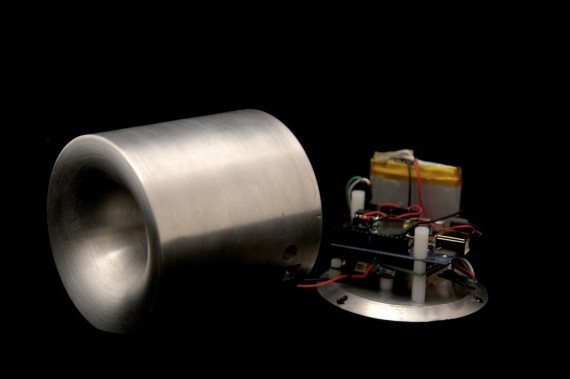
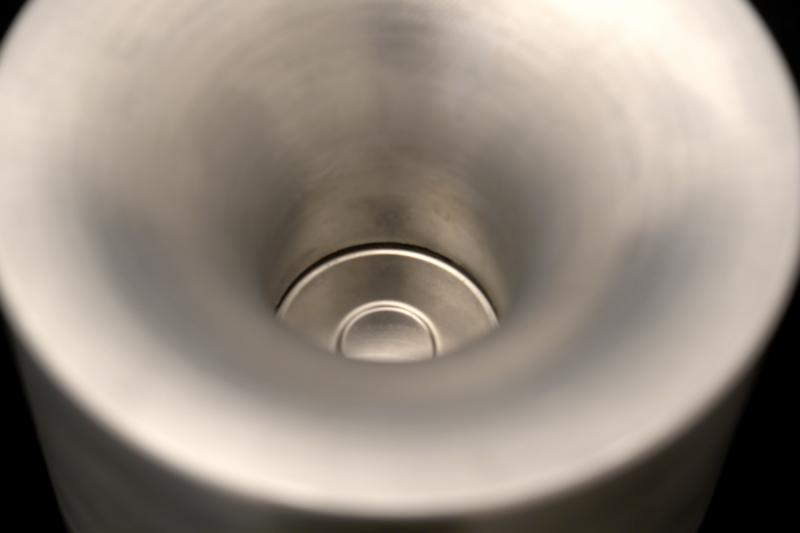
Can we watch decay? Can we see glass as a fluid slowly slumping and deforming over time?
Everything is in constant flux, yet we consider many things around us static and fixed. 3.16 Billion Cycles is an attempt to unravel a seemingly unchanging 100 years into a set of relationships in digestible increments.

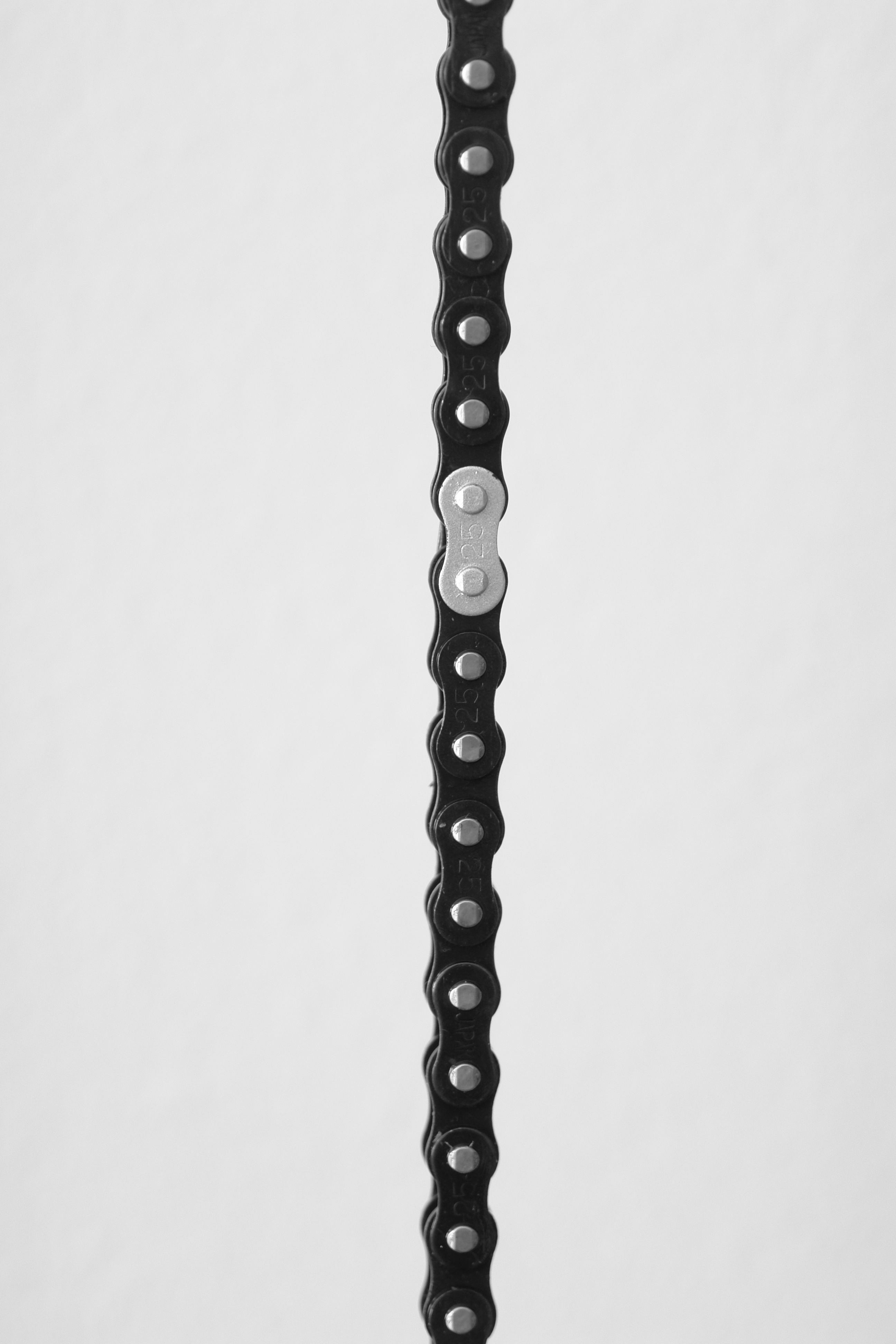

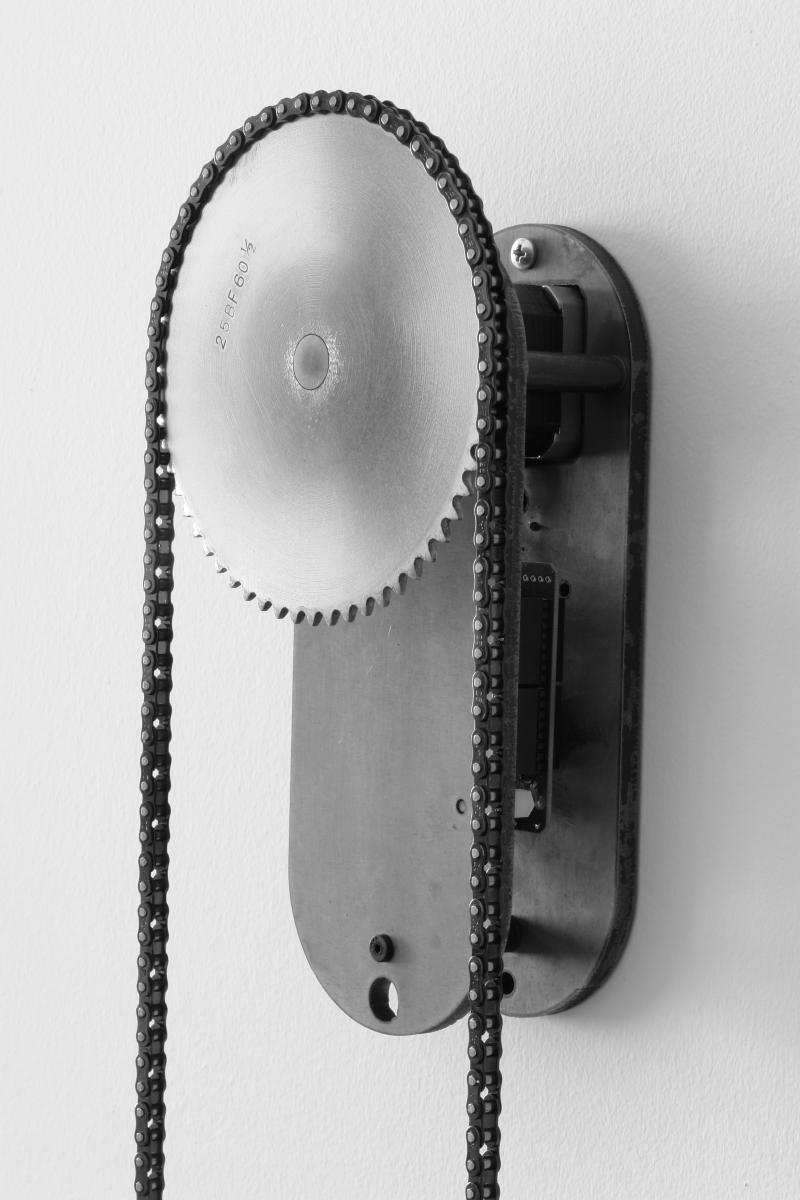
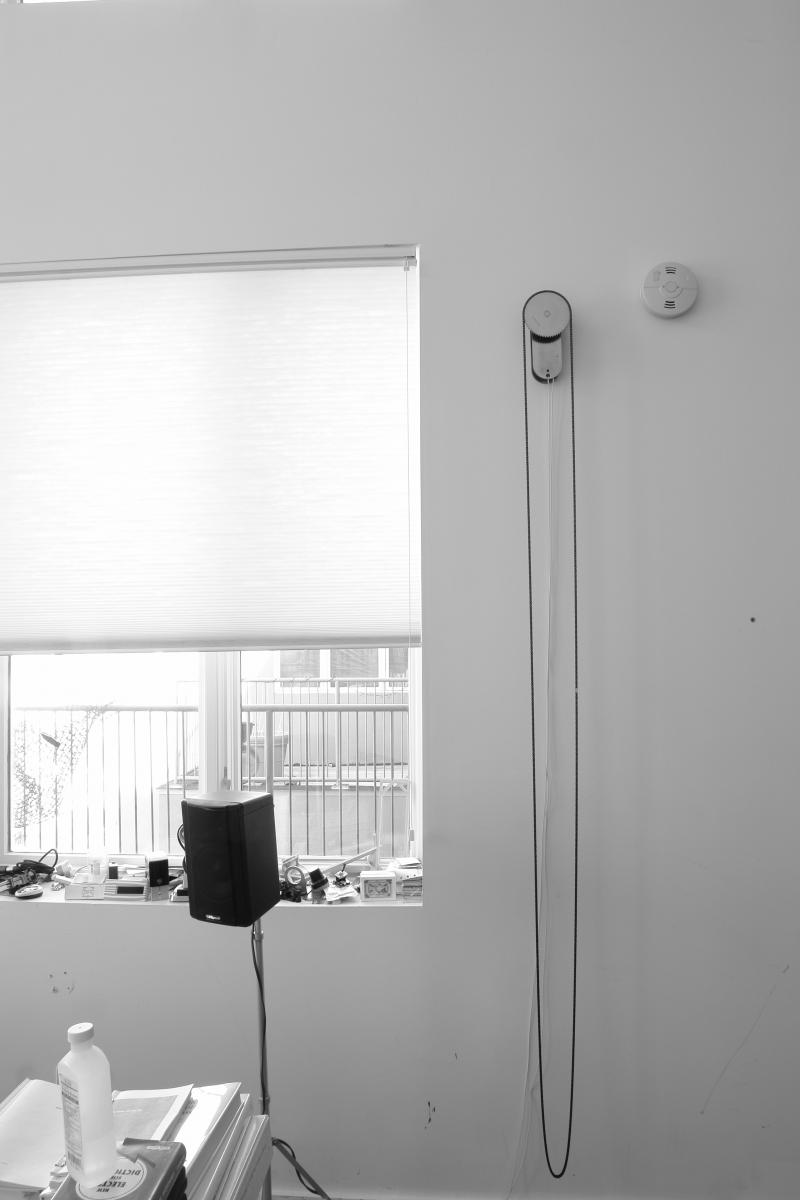
A slow resolution display made out of standard lightbulbs and thermochromic paint.
This display lives at the intersection of digital control and analog output. A matrix of lightbulbs painted with thermochromic paint allows for an image to appear and dissipate analogously to the temperature of each bulb.
The overall effect defies our ordinary understanding of materials and time within technological systems.
In this case, lightbulbs are used for heat and not light. And the refresh rate of an image is constrained to the time it takes for the material of the screen to change temperature.
More on thermochromism here.
Here, we’re using 40 watt bulbs. They take a few seconds to warm up and turn white and a couple minutes to cool down and fade back to black.
Built by Alex Abreu, Taylor Levy, and Che-Wei Wang
Thanks to the dozens and dozens of you who helped make this project possible!
Thermochromic Display from che-wei wang on Vimeo.
This is a one-off hack to retrofit a genuine Western Electric Dreyfuss Telephone Handset into a full fledged Bluetooth handset. A single button at the center of the mouthpiece controls all the functions (pairing, answering calls, etc.), while a blue and red LED indicator glows from within. The handset recharges via USB and lasts 6 hours in active talk-time and 110 hours in standby mode.
Bikecrumbs is an invisible ink dripper that attaches to my bike to leave a permanent trail every where I ride. The trail is only visible when viewed under UV light.
Bikecrumbs: Prototype 01 from che-wei wang on Vimeo.
Tetherlight is a hand held light that perpetually points at its sibling. Two Tetherlights constantly point at each other, guiding one Tetherlight to the other with a beam of light.
Tetherlight: Prototype 02 Rotation from che-wei wang on Vimeo.
The devices are each equipped with a GPS module, a digital compass, and a wireless communication module to locate, orient, and communicate its position to the other. They each calculate the proper alignment of a robotic neck to point a light in the other’s direction. In order to maintain the light’s orientation, an accelerometer compensates for the device’s tilt.
Tetherlights are for loving spouses, cheating spouses, girlfriends, boyfriends, children, pets, bags of money, packages, and pretty much anything that you would want to locate at a glance. An ideal use of Tetherlights would be in a situation where two people or two groups of people need to wander, but also need to locate one another in an instant. In a hiking scenario, a large group might spit up to accommodate different paces. With Tetherlights, understanding one’s whereabouts in relation to the other group is represented spatially with a bright light in the appropriate direction.
Tetherlight attempts to make one’s relation to a distant person more immediate by making a physical pointer instead of an abstract maps. With traditional maps, people need to communicate their positions, orient their maps, locate a point on the map, then look up in that direction. Tetherlight does it in an instant. The difference is like looking at a map to see where your uncle lives or having a string that’s always attached to him.
If you’re interested, here’s the Arduino Code: Tetherlight06xbeeGPS.pde
Drum space is a percussion instrument that transforms environments into drums. Participants are immersed within the space of drums as beats are created from the surrounding surfaces. The audio experience of the space is negotiated by each participant as they add and remove beats from sequences previously constructed by other participants. Will the space be raging noise or subtle clicks?
Here’s the first test with Ornos. The compass readings are behaving pretty well considering it’s right underneath a spinning hard drive. The 1.2Ghz processor and 512 RAM don’t seem to be enough to download and render the image quickly enough, so I’m going to have to figure out how to speed things up.
Momo is a haptic navigational device that requires only the sense of touch to guide a user. No maps, no text, no arrows, no lights. It sits on the palm of one’s hand and leans, vibrates and gravitates towards a preset location. Akin to someone pointing you in the right direction, there is no need to find your map, you simply follow as the device gravitates to your destination.
momo version 4 now has a sturdier lighter frame. A couple switches were added to control power to arduino and to the GPS unit. The whole unit somehow runs off 4 AA batteries instead of 8. I also realized the compass unit is not as accurate as we’d like. It has a sour spot around 180-270 degrees where the measurements are noticably off by several degrees, due to electromagnetic interference from the nearby motors.
momo version 4 (pov) from che-wei wang on Vimeo.
momo beta scenario 01 from che-wei wang on Vimeo.
moMo V2 : compass motion 01 from che-wei wang on Vimeo.
Precedents:
http://www.beatrizdacosta.net/stillopen/gpstut.php
http://www.mologogo.com/
http://mobiquitous.com/active-belt-e.html
http://news.bbc.co.uk/2/hi/technology/6905286.stm
http://www.freymartin.de/en/projects/cabboots
SlaHuRa or Slappable Huggable Radio is a FM and AM radio that uses an accelerometer (tilt sensor) to change volume and frequency. There are no buttons to press or dials to spin. Tilting the radio from side to side adjusts the frequency. Tilting it from front to back changes the volume.
Muji Award 02 entries.
 The Master Mustache sticker set is finally here. The first set features the Kitchener , Nietzsche, Einstein, DalÃ, Chaplin , and the Fu Manchu. All classics. Power, intelligence, class, and fantasy in a line above your lip. This set of 6 mustaches are made of the highest quality vinyl and made to last. Stick them on you face, your roommate’s sleeping face, or mustachify anything that doesn’t already have a mustache. Head over to the shop to get your own.
The Master Mustache sticker set is finally here. The first set features the Kitchener , Nietzsche, Einstein, DalÃ, Chaplin , and the Fu Manchu. All classics. Power, intelligence, class, and fantasy in a line above your lip. This set of 6 mustaches are made of the highest quality vinyl and made to last. Stick them on you face, your roommate’s sleeping face, or mustachify anything that doesn’t already have a mustache. Head over to the shop to get your own.